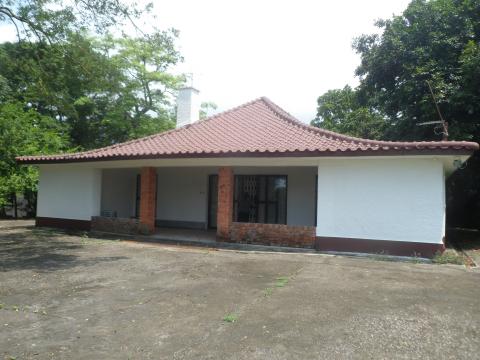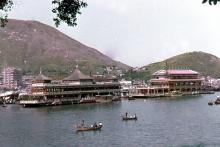Things have been moving slowly with regard to the British taking over control from the Japanese, but that changes today.
Franklin Gimson refuses Selwyn-Clarke's request to set up an administration, saying he needs the permission of the London Government to take such a decisive step. He sends Arthur May to Macao with a message for London - if they agree to an immediate British take-over they should broadcast the phrase 'Hongkong go ahead' over the radio. However, May first has to find a boat and then to wait out the typhoon of August 24th-25th before its safe to set sail and he won't leave until August 26th. Nevertheless, Gimson uses the fact of his mission to get the camp council to allow him to swear the oath making him Officer Administering the Government (OAG), arguing that London will soon hear he's ready to take over so this crucial step is now urgent.
He now has the legal authority to govern Hong Kong but that's a long way from having the power to do so in reality. The message sent through Arthur May is optimistic, offering to take immediate control, but this mood doesn't last long. Later today a British Army Aid Group (BAAG) mission arrives from Macao: although May is still in Hong Kong, it coincidentally bears the answer to Gimson's question.
The BAAG team is headed by Y. C. Liang (code name 'PL'), and comprises Dr. Eddie Gosano ('Phoenix'), Rogiero Lobo and the radio operator Fung Bei. Gosano contacts Selwyn-Clarke and is eventually sent to Kowloon to help Dr. Newton restore medical services there. Liang makes a dramatic appearance in Gimson's room and passes on a message from the British Government - received by Lindsay Ride ('Blue') on August 13th - telling Gimson to leave camp and set up a civilian administration. Liang briefs Gimson and other senior civil servants on conditions in Hong Kong and gives him gold sovereigns to cover immediate expenses.
Liang urges Gimson strongly to act immediately, but this pressure - reminiscent of Selwyn-Clarke's - pushes Gimson in the opposite direction. He gives Liang a reply for London that amounts to a refusal to set up an administration that would not be able to maintain law and order. He does, however, decide that he should move into an office in town as soon as possible and send a message over the radio telling the world he has done so. In other words, his policy is to take symbolic control of Hong Kong before the Chinese or Americans arrive, but without pushing the Japanese authorities to stand down - only they can hold off the armed Triads, the desparate looters, the Nationalists, the Communists, renegade Japanese soldiers out to avenge their defeat....
The Allied prisoners who were sent to a prison in Canton on June 22 were brought back to Hong Kong yesterday. Today those who were arrested in Stanley are brought back into the camp. One of them, William Anderson, will spend the next five days in Tweed Bay Hospital. Banker Andrew Leiper, who returns to Bungalow 'E', will soon join him:
Still half asleep and confused by my surroundings I rose, and in the dim light I saw a Japanese soldier standing in the doorway looking at me.
Possibly the man was hungry and was hoping that he could get some food, But the effect on me of his visitation was immediate and devastating.
I have no recollection of what happened after I felt as though my racing and violently-thumping heart would burst through my chest. However (,) I was subsequently told that I waked the others by screaming hysterically that it was all a dream, the war was not finished, and the Japanese had come to arrest me again.
He is sedated for two weeks and spends a week in hospital being medically examined.
Other returnees today: James Anderson, Reginald Camidge (arrested 6/2/44),William Cruickshank and Hugo Foy,
Dr. Frederick Bunje and his wife Margaret Lucy are also brought to Stanley - as far as I know, this is the doctor's first visit, and I've seen no evidence that Mrs. Bunje was sent to the Camp after her husband's arrest on May 2, 1943, so it might be hers too. Mary Selwyn-Clarke is also sent in from Ma Tau-wai, presumably because her parents think she'll be safer than in the uncertainties of Kowloon.
Hong Kong's on the agenda at the House of Commons today, and it attracts multi-party interest. The Leader of the Opposition, Winston Churchill (Conservative), asks Prime Minister Attlee (Labour) if the Government is making any plans to restore British administration in Hong Kong as soon as the Japanese surrender is received. Attlee assures him that such plans are 'fully prepared', but a suspicious Churchill reminds him of his own (Churchill's) clear commitment to allowing no change in administration. Attlee remembers that commitment. Mr Maxton (Independent Labour) wants the P. M. to bear in mind that the senior civil servants in Hong Kong have been imprisoned and will need a period of 'rest and relaxation' before they take up their duties again. The P. M. agrees. Mr Gallacher (Communist), returning to the question of sovereignty, hopes it won't be settled 'with the atomic bomb in the background'.
Under the headline 'Save the Prisoners' Order Goes Out', the Daily Express reports on page 1:
BRITISH WARSHIPS AND C A R R I E R S ARE TONIGHT
TAKING ON STRONG FORCES OF SPECIALLY TRAINED
TROOPS TO RACE TO THE RESCUE OF PRISONERS OF
WAR IN JAPANESE HANDS.
The Australian Army and Navy are joining in and within days two powerful fleets in full battle trim will steam from this South-West Pacific base for the prison camps of Hongkong, Shanghai and Formosa….
The carriers have fighting planes too. Commandos and paratroops are sailing in the warships. Our commanders half expect that we may have to shoot our way into Hongkong, although MacArthur’s surrender orders to the Japs stipulate that we shall go to the aid of our men without interference.
The family and friends of the Hong Kong prisoners must be on tenterhooks.
Sources:
May: Selwyn Selwyn-Clarke, Footprints, 1975, 99; Arthur May Papers, Hong Kong University Library Special Collections, A4
BAAG Mission and Gimson's response: Ride Papers (British National Archive online) and documents in Selwyn-Clarke Papers and Hong Kong Public Records Office
Prisoners: Stanley Camp Log (IWM); China Mail, October 17, 1945, page 2
Leiper: Andrew Leiper: A Yen For My Thoughts, 1982, 224
Commons: http://hansard.millbanksystems.com/commons/1945/aug/23/hong-kong-british-administration#S5CV0413P0_19450823_HOC_249
Note 1:
James Maxton was the Independent Labour Party M.P. for a Glasgow seat. The only other trace of an interest in Hong Kong I can find was a question he asked in the House in 1933 about the detention there of a Malayan political refugee. He doesn't come from the kind of political background that would make one expect him to be particularly concerned for the welfare of senior British colonial civil servants (and I doubt that the fact that he almost certainly knew Hilda Selwyn-Clarke, who had stood as an ILP candidate, had any influence on him!)
On the same day he asked a question about U Saw, the former Burmese Prime Minister, who'd been held by the British for four years in Uganda after they discovered he'd been in touch with the Japanese. I have a hunch that Maxton, a long-standing anti-imperialist, was trying to put a tiny spoke in the wheel of the British resumption of sovereignty in Hong Kong.


